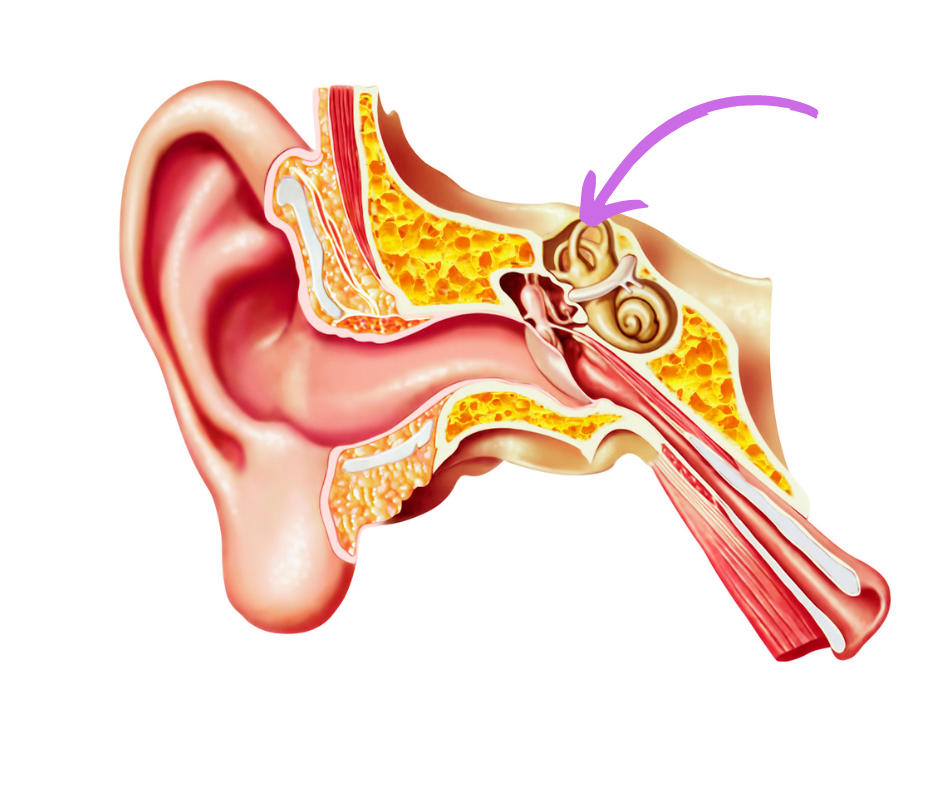
Yes, you have crystals in your ear! They are not sparkly, shiny gems floating around in there. Rather, they are called otoconia and are microscopic particles made up of calcium carbonate. You are born with millions of these otoconia, which can be found in the vestibule of the vestibular system.
The vestibular system is located in your inner ear. It is a component of our balance system and detects how our head is positioned in space in relation to the pull of gravity. It helps to maintain eye stability so that we can have clear vision while our head is moving. It also helps maintain an upright posture of our spine. The vestibular system detects linear (up-down/side-to-side) and angular (rotation) acceleration of the head. Our otoconia are found in the center portion of the vestibular system where linear acceleration is detected. They actually help to trigger the nerves that send a message to our brains about the acceleration forces they detect.
The vestibular system, however, is not always perfect. Sometimes, the otoconia can break away from their normal “home” in the vestibule and get stuck in the canals in our vestibular system that are full of fluid and detect rotational/angular acceleration of the head. When this happens, people will notice a sensation of vertigo (spinning) that lasts up to 60 seconds each time that particular canal is activated. This dysfunction is called BPPV, which is short for Benign Paroxysmal Positional Vertigo.
BPPV is the most common vestibular dysfunction in adults. About 1 in 10 adults will experience BPPV during their lifetime. It is a mechanical problem that is diagnosed by placing the head in a position that activates the affected canal in the vestibular system. The test is positive if it produces nystagmus (a bouncing, rotational movement of the eyes) and vertigo symptoms. While BPPV is quite common, it can be very disruptive to everyday life. Typically, people will complain of episodes of vertigo with bending forward, looking up, or even rolling over in bed. While the actual sensation of vertigo is short-lived, individuals may also experience sensations of unsteadiness and nausea between bouts of vertigo.
BPPV is relatively easy to treat. By moving the head through a series of positions, it is possible to help move the otoconia out of the semicircular canal where they are stuck and back into the vestibule where they should normally exist. The most common of these maneuvers is the Epley maneuver. While it is easy to find instructions and videos for self-treatment of BPPV online, it is important to consult with a professional first. You must make sure that you are performing the correct maneuver for the canal that is affected by BPPV since you have six of them in total. You also need to make sure that the problem you have is actually BPPV. Not all vertigo (and not even all positional vertigo) is caused by those displaced otoconia.
There is no way to guarantee that your otoconia stay in place throughout your lifetime. However, maintaining a healthy blood pressure, Vitamin D levels, and magnesium levels can help to reduce your risk of BPPV. If you think you have BPPV, reach out to your vestibular specialist for help!